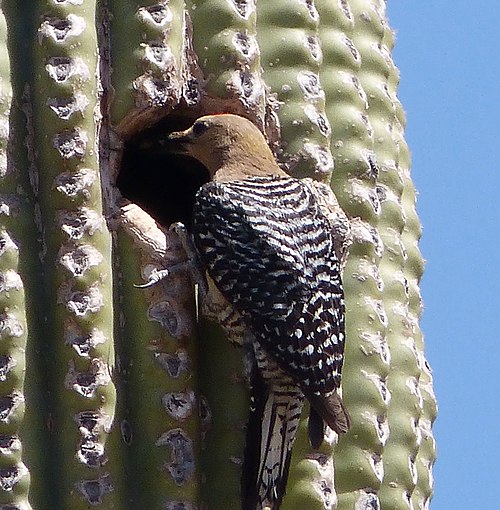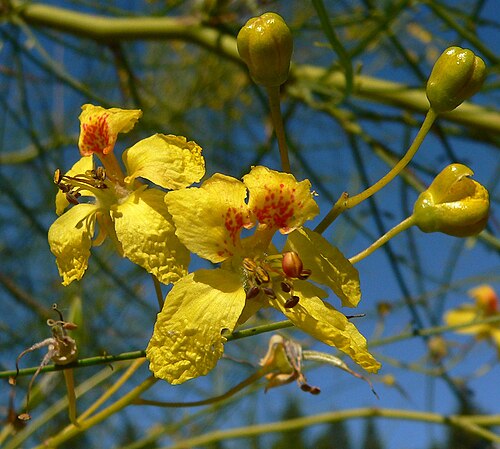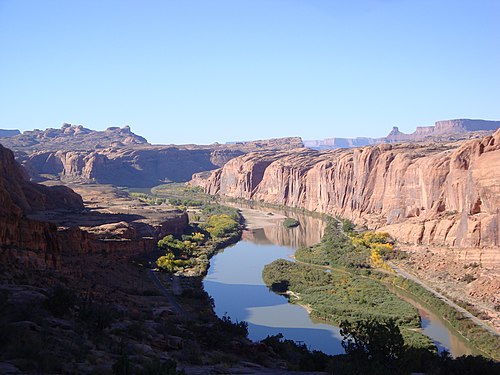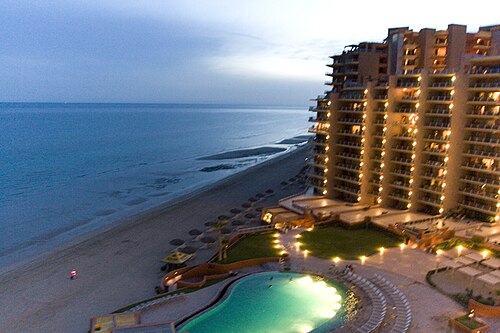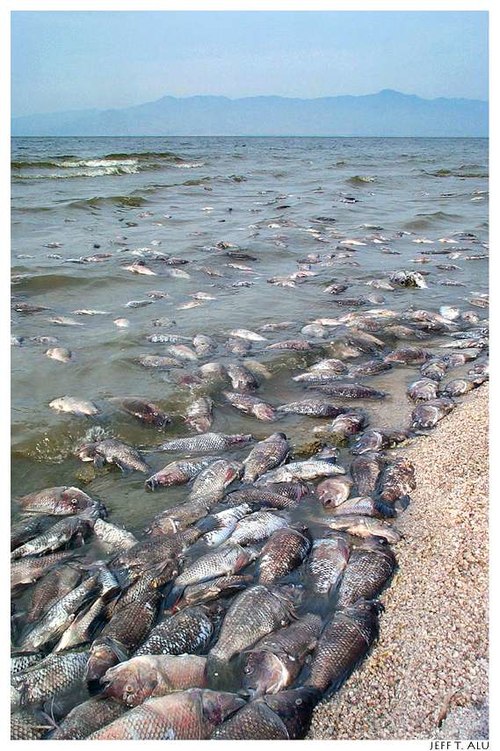User:Oyg20/sandbox
Animal in the Lower Region of the Colorado River[edit]
Melanerpes uropygialis[edit]
One animal in the Lower Colorado Region is the Gila Woodpecker. The wings of the bird are spotted and have zebra-like pattern, they also have a grey and tan color neck, throat and belly. The difference between male and female Gila Woodpeckers is males have a red cap on their head and females and younger birds do not have the red cap. Many of these birds can be found in low desert scrubs in the Sonoran Desert. Many of these birds make their homes in Saguaros or in Honey Mesquite trees. Breeding for these animals occurs in a hole in the Saguaro or Honey Mesquite. Typically they lay about three to four eggs and this occurs usually about two to three times a year. Interestingly both males and females feed and incubate the eggs. The Gila Woodpecker usually feeds on insects but it will occasionally feed on fruits, nectar, seeds, lizards, worms and sometimes they will even eat young chicks. In California the number of Gila Woodpeckers has dropped drastically but in Arizona the number is remaining constant. it is believed that the drastic drop in number in Gila Woodpeckers in California is due to climate change. The Saguaro, which also houses Gila Woodpeckers, has been drastically effected by climate change and doesn't grow as fast as it usually does. So if one of the habitats aren't available for these birds they will go somewhere else or just wont survive.
Plant in the Lower Region of the Colorado River[edit]
Parkinsonia aculeata[edit]
The Mexican palo verde (Parkinsonia aculeata) can either be a spiny shrub or a small tree. It can grow to be between 6 to 26 feet tall. The leaves can grow to be 15 to 20 centimeters long and grow about 25 tiny oval leaflets . About eight of the yellow-orange flowers grow on the tree and this occurs between March and April or September and October. In certain areas this plant can be one of the worst weeds of all and that is due to its thickness. It prevents animals from wandering through the area, as well as blocking waterways which can cause major problems over time. The Mexican palo verde is not endangered and is very successful in this environment. This plant can thrive in almost any environment which works in its favor so it can adapt to any environment it lives in.
Geology[edit]
Geology deals with continents that break "apart, collide and re-form or slide beneath one another, with rivers and oceans that appear and disappear, with mountain ranges whose battered remnants have been carried away and now lie buried on some other continent." During the Cretaceous period, which was about 100 million years ago, part of western North America was still connected to the Pacific Ocean. About 20-30 million years ago volcanic activity led to the "Mid-Tertiary ignimbrite flare-up that created smaller formations, such as the Chiricahua Mountains in Arizona and left a significant amount of volcanic ash and debris." The Basin and Range started about 20 million years ago and Sierra Nevada began forming about 10 million years ago that caused the Colorado to flow south towards the Gulf. As the Colorado Plateau continued to rise around 2.5-5 million years ago the river would stay its course still. In the last 1 million years the Salton Sink formed and reached 260 feet below sea level. After about 50 tears the lake evaporated the Colorado continued to flow to the gulf which left the lower Colorado River region.
Water Use[edit]
Puerto Penasco[edit]
Many people across the United States visit Puerto Penasco and in doing so many different restaurants, hotels, motels, RV facilities, market places and homes have covered the land. With such a high demand in tourism much of the land is used to help bring more people around. For example, there are beach houses that sell at ridiculous prices, areas where tourists can drive through different landscapes to see where ancient volcanoes erupted and the lava solidified. The water in the area comes from wells and various aquifers and is then purified for drinking. The only thing that makes people hesitate to drink the water is the taste of the water and that is due to the high mineral content. Government officials are also looking into making the Puerto Penasco Desalination Facility that could potentially help get more water out into the community when needed and in the future be able to share water with the U.S.. The water that will be used will come from the Sea of Cortez, which over time can cause serious issues .
Water Threats[edit]
[edit]
The Navajo Generating Station was a power plant that was used built in Arizona that changed many lives but damaged the environment. This power plant generated electricity for residents in Arizona, Nevada and California. Not only did it provide electricity but it also pumped water from the Colorado River for the Central Arizona Project. The project was scheduled to run from 2017-2019 and if operators approved then it would continue until 2044. Fortunately the plant was shut down and will be taken down within the next couple of years. So what made this power plant so dangerous for the Colorado River? Well the water that was supplied to run the power plant was coming from the Colorado River. Arizona was annually given about 50,000 acre feet of Colorado River water. So the water that was specifically set aside was being taken up for the power plant and eventually it was going to need more over a long period of time. It not only impacted the river but it also affected the Navajo Tribe living near the plant. Overall it was beneficial, for the environment, to shut down the plant but it did cause people to lose their jobs.
Salton Sea[edit]
For some time the Salton Sea was a popular place but over time people stopped visiting. This was due to the agricultural runoff, pollution and the increasing salinity of the water. With all these different things occurring the fish in the water began to die off and people weren't interested in smelling decaying fish. There also was decaying fish washing up on the beach and it would sit there for days on end. Now people who go visit the Salton Sea go and explore the abandoned areas around the water. This once beautiful place is now a “dead” place. The threat was humans taking advantage of the opportunity that was here. Trash was dumped into the sea and now we can only hope that over time the Colorado River can help improve the area before it becomes dried up.


